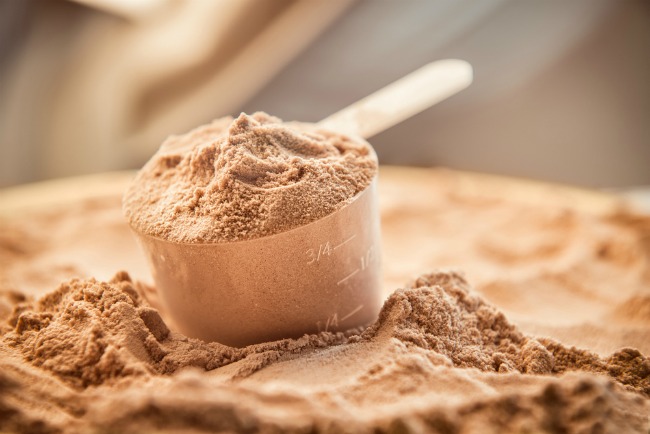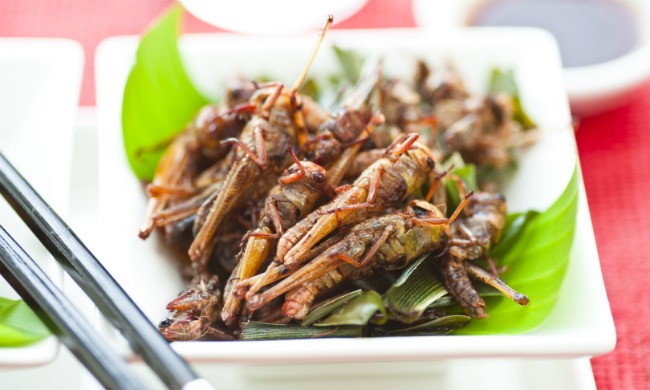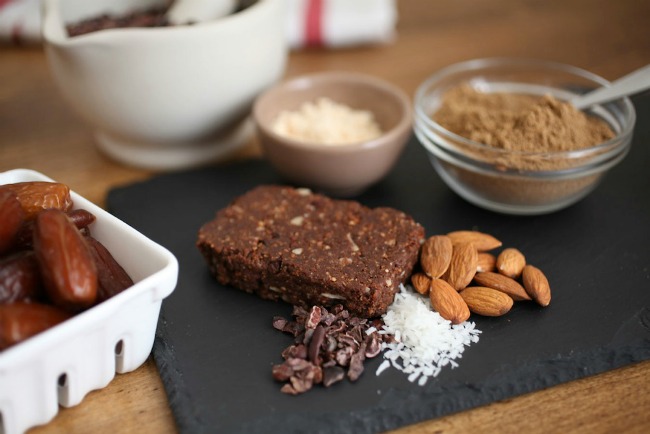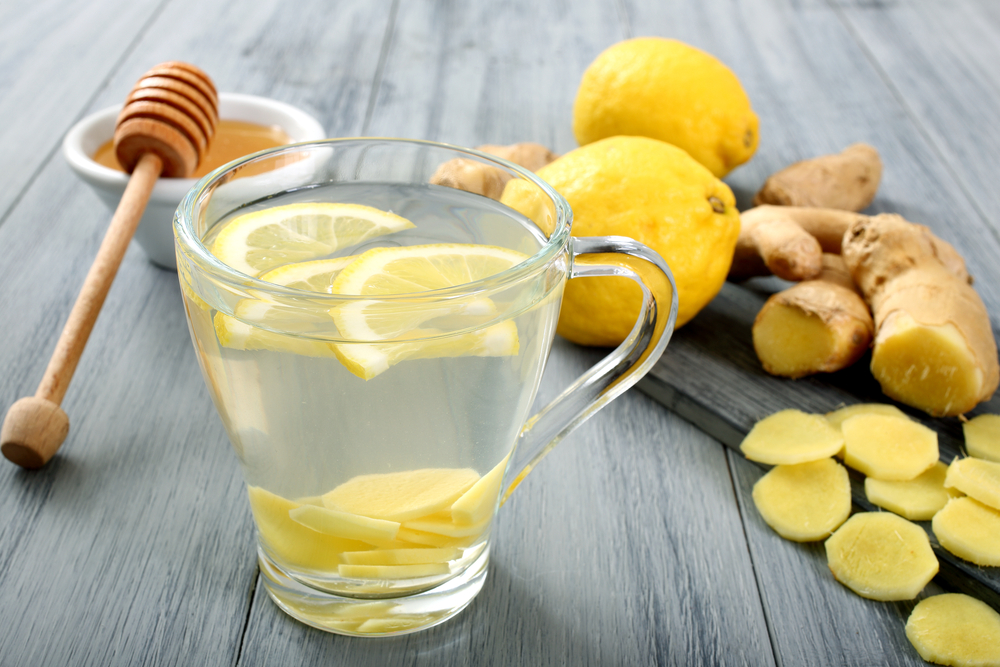
While you may cringe at the thought of chewing crunchy crickets, insect protein may just one of the most sustainable, environmentally friendly, and healthy protein sources out there.
Amongst the many benefits, insect protein may have:
- More arginine that soybeans
- More zinc than pumpkin seeds
- More protein than snail meat
- Low saturated fat content
Maybe… you’ll give cricket protein powder a second thought…
You may also be leaving less footprint on the environment too. According to Forbes, crickets require ten times less feed than cattle, and their protein conversion ratio (food in: food produced) is close to 1: 1. Environmentally speaking, crickets generate approximately 80% less methane than farm animals.
So to help you understand more about insect protein, I’ve interviewed Harman, an edible insect consultant. We’ll be talking about:
- Why insect protein maybe better than animal (mammal) protein
- Why the insect protein bar may not taste, smell, or look like insects
- Why cricket protein powder maybe more paleo-friendly (low-carb) than you think
- Why insect protein may trump whey protein
- Hygienic standards of insect protein…

Let’s go:
Why you may want to give insect protein a try:
Q: Hi, Thanks a lot for taking the time to speak with us. Can you tell us a little bit more about your background, and how you got into edible insects?
Harman: Yeah, sure. I was in college in my second year at the University of Georgia and I was studying insects back then. I came across a lecture series on why insects are just so fantastic for the planet. I became very interested.
And the more I dug into the concept online, the more I realized that no one was actually doing anything in the area at the time.
To fill my own need, I started farming some insects. The more I got into the community, the more I realized that people really would love to buy my insects.
So it went from, I guess being a really small, little pseudo business in a college dorm room to 2012, 2013 and 2014, when the idea of edible insects really blew up and had some serious consideration thrown on it.
We saw the company grow wildly as more and more people wanted safe and well-grown insects available. We started developing real processes and new ways to raise these insects so that they’re more ethical and safer to consume.
Then my company focused on more than entomophagy, and supplying other companies with the safer raw ingredients so they don’t have to worry about all the backend that goes into making a safe insect.
Then we developed cricket powder pretty early on and that’s kind of taken a hold of the entire industry.
It’s a very easy way to just hide the insect into a food product without having any really upsetting mouthfeel, taste or smell or visual aspects to it.
Insect Protein vs. Meat Protein?
Q: So tell me more about your premise of using insects. Obviously, the advantages of insect protein versus, say, meat protein on the environment. Can you elaborate on that a little bit?
Harman: There are so many reasons why insects are so fantastic and why you see so many people actually care about it.
The first one is that it’s incredibly environmentally friendly, so you can use up to less than five hundredths of the water a similar amount of beef would take in terms of crickets and less than a thousandth of the land.
We can do things like vertical farm and farm in conjunction with hydroponics and so on, so there’s a lot of opportunity to have incredibly sustainable protein farming using insects as opposed to more traditional livestock.
Then the other aspect of it is they’re incredibly nutritious.
Insects are composed mostly of protein and it’s mostly complete protein. This applies to all the amino acids that humans need to eat on top of adding a whole bunch of macro-nutrients like magnesium and iron and so on.

By no means am I saying that we should completely switch, stop eating steaks and completely switch to insects, but a slow introduction of insects into a normal diet can only be a good thing and can only lead and pave the way for other future foods that will hopefully take up the brunt of the fact that our food system is unsustainable at the moment.
Cricket Protein Powder?
Q: Okay. So you talked a little bit about the powder, the cricket powder that you created. Tell us a little more about that. How does it taste, how did the process work, how did you make it into a powdered form?
Harman: It comes out a very finely ground brown or light brown powder with a slightly reddish tinge sometimes. It smells a little bit like nut meal, almost like peanut butter but more almond-y, and people say it tastes like anything from a nut all the way over to popcorn. So it’s got a very mild, very low-key flavor. Not something that’s going to really surprise you or have a sharp taste in your mouth.
It’s a little gritty, but depending on how fine you mill the powder, it can be very, very soft as well.
It’s very fat heavy, so it combines very quickly in things like butter or cookies or so on and so forth and it works as a one to three replacement to flour.

So you can actually use it to bake and add protein to your cookies as opposed to just carbs.
Then in terms of how it’s made, different companies do it different ways. The most basic way is obviously the insects are harvested and then they’re roasted, usually over a long period of time so you’re removing a lot of the moisture and concentrating the protein and macro nutrients. And those crickets are finely milled into a very, very fine powder.
Q: That’s really interesting. There are also other products like pasta, like bars, the granola. Do you have any comments on those products?
Harman: All of those products rely on the powder. All of those products and the companies that use them actually use powder produced by companies like Aspire Food Group to skip out on all the trouble of making their own powder, which involves farming crickets, etc., etc.
But those are awesome and those are honestly the future of edible insects in America. There’s no way Americans are going to be eating whole crickets and whole grasshoppers and so on.
They’re going to be eating things like these cross fit-healthy, paleo-approved cricket bar very much over eating an actual cricket on rice or something.
Got Whey?
Q: So if we were to compare, say, a whey protein powder versus an insect protein powder, what would be the difference in terms of, say, the taste, and obviously there are different types of tastes? In terms of the nutrition value? Do you have any comments on that?
Harman: It’ll primarily be taste. Texture wouldn’t be that different.
Bioavailability should actually be a little bit higher for insects so you should be taking in more of the protein than you would with whey.
Q: Why is that?
Harman: The why, I’m honestly not sure about, but the bioavailability of insect protein is remarkable. I’m not quite sure exactly what it is about the insect protein that’s unique.
Honestly, really, the biggest difference that the consumers will notice is price. Insect protein is still significantly more expensive than things like whey protein at the moment.
We just don’t have industrial ways to automate the rearing of crickets. It’s very labor heavy. That’s what’s quite expensive. Especially if you keep it in the U.S.
Will insect protein be taking over the world?
Q: I see. So where do you see the future of this industry going?
Harman: Right now, it’s more or less going to continue the way it’s been going, you’re just going to see a lot of small-scale cricket and other edible insect farmers kind of pop up all over the country. Just in this past month, two more have opened in California. They’re obviously going to be competing for a rather limited amount of business with the start-ups that you see around the U.S. and North America in general.
We’re probably not going to see major movement until a few more years down the line when places like Trader Joe’s and Whole Foods have a much more public acceptance of edible insect products within their marketplace and then from there, you may see some of the larger food companies look to start putting out one or two edible insect products.
So we’re not going to be seeing any major rollout any time soon, but within the next two to three years, we’re definitely going to be noticing several edible insect products in Whole Foods. In the next four to six years, you’re definitely going to start seeing them in larger chains around the country.
Q: Now that’s awesome. Lastly, other than crickets, what other insects do you see people consuming going forward and why crickets anyway?
Harman: Crickets because they’re the most economical at the moment. They’re the ones where they can be produced into powder and sold with a reasonable margin of profit, mostly because we know how to raise them in large quantities.
We know how to raise mealworms in large quantities; they’re just not… no one’s taken the time to find a way to make a proper powder on an industrial scale with them. But mealworms have been bandied around, it’s kind of a future…
Honestly, in the U.S., crickets and mealworms are probably what we’re going to be seeing. We may branch out to grasshoppers, but they won’t be mainstream. It’s just not sustainable.
Insect Protein: How clean is it?
Q: In terms of the hygienic standards for crickets, how does it work? Is it clean when people eat that, because people may be worried that it’s dirty, it’s gross.
Harman: In terms of the hygienic standards used in the raising of insects, which is very important, I can’t speak to that. That’s each individual company’s thing.
There’s no standard that’s been established by the industry just yet, but I do know that the vast majority of these companies that produce these, like the powder, one of the very, very first steps after harvest is washing.
So when I ran the production department at Aspire, and I know they carry on these practices today, immediately upon harvesting, all the insects are washed and cleaned, then put through a boiling cycle to make sure that they’re disinfected before we go on to the roasting and everything else.
Q: Well, that’s awesome! Thanks a lot for taking the time to speak with us.
Harman: Yeah, no worries!
Remember to sign up on our email list for more updates on cutting edge, sustainable, food choices.


